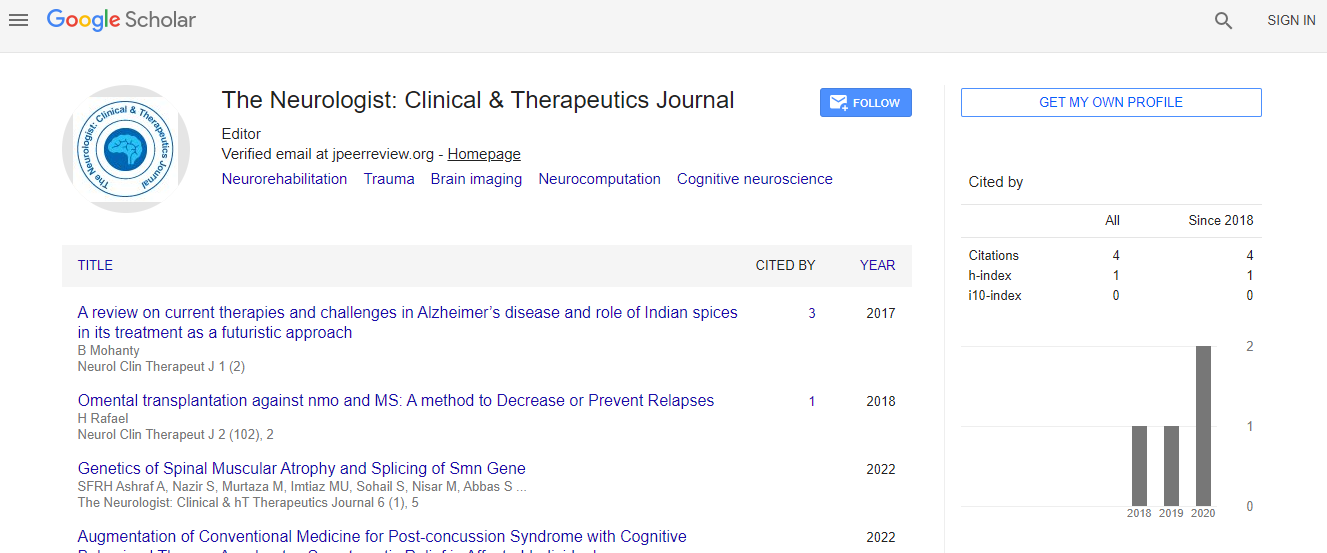Reversal of Rotenone Induced Neurotoxicity on Parkinsonâs Affected Neuronal Cells through Antioxidants Glutathione, Piperlongumine, and Piperlonguminine
*Corresponding Author:
Copyright: © 2020 . This is an open-access article distributed under the terms of the Creative Commons Attribution License, which permits unrestricted use, distribution, and reproduction in any medium, provided the original author and source are credited.
Abstract
Parkinson’s Disease (PD) is the second most common form of dementia and currently affects over 10 million people. Parkinson’s is a neurodegenerative disease that results in significant loss of cholinergic neurons. Symptoms include tremors, Bradykinesia (slowed movement), rigid muscles, impaired posture/balance, loss of automatic/unconscious movements, speech changes, and writing changes.
Rotenone is an odorless, colorless, crystalline isoflavone used as a broad-spectrum insecticide. By inhibiting the mitochondrial complex I, ROS (Reactive oxidative stress) levels substantially increase in the cells, and the number of dead cells is remarkably higher. As a result of this deficiency in complex I in the mitochondria, an increase in ROS and the reduction of energy stores ensues, eventually contributing to neurodegeneration of cholinergic neurons. Through this process, rotenone triggers morphological changes in cells. Rotenone is a naturally occurring insecticide that is used worldwide because it has broad pesticidal properties. Due to the widespread use of rotenone, the reversal of this neurotoxicity is the current need for Parkinson’s Disease patients. Because there is evidence that antioxidants Glutathione, Piperlongumine, and Piperlonguminine protect the mitochondrial complex I, this study focuses on the protective effects of these respective chemicals on Parkinson’s neuronal cells exposed to rotenone.

 Spanish
Spanish  Chinese
Chinese  Russian
Russian  German
German  French
French  Japanese
Japanese  Portuguese
Portuguese  Hindi
Hindi 